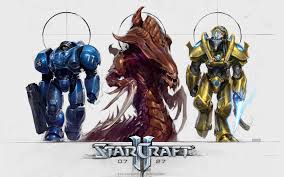Warcraft is a franchise of video games, novels, and other
media created by Blizzard Entertainment. The series is made up of five core
games: Warcraft: Orcs & Humans, Warcraft II: Tides of Darkness, Warcraft
III: Reign of Chaos, World of Warcraft, and Hearthstone: Heroes of Warcraft.
The first three of these core games are in the real-time strategy genre, where
opposing players command virtual armies in battle against each other or a
computer-controlled enemy. The fourth and best-selling title of the franchise
is a massively multiplayer online role-playing game (MMORPG), where players
control their character and interact with each other in a virtual world. The
most recent title is Hearthstone, a digital collectible card game.
Of these games, no expansion sets were released for
Warcraft: Orcs & Humans, but Warcraft II was accompanied by the release of
Warcraft II: Beyond the Dark Portal and Warcraft III was accompanied by the
release of Warcraft III: The Frozen Throne. Multiple expansion packages also
accompanied World of Warcraft, which include: The Burning Crusade, Wrath of the
Lich King, Cataclysm, Mists of Pandaria, Warlords of Draenor and Legion.
All games in the series have been set in and around the
world of Azeroth, a high fantasy setting. Initially, the start of the series
focused on the human nations that make up the Eastern Kingdoms, and the Orcish
Horde, which arrived in Azeroth via a dark portal, beginning the great wars.
The Orcs came from another world, referred to as Draenor, which then turns into
Outland, the world that will be shattered into pieces by demonic magics during
the events of Warcraft II. Later on in the series the world of Azeroth was
expanded, revealing the new continents of Kalimdor, Northrend and Pandaria,
allowing the introduction of the Night Elves, Tauren and other major races into
the universe. The world of Azeroth also contains the traditional fantasy
setting races of elves, dwarves, gnomes, orcs, and trolls.
The series also resulted in the publishing of several books
relevant to the Warcraft universe setting, covering a broad range of the
timelines of the universe. A collectable card game was also published, which
offered those who bought booster packs a chance to gain access codes to limited
in-game content in World of Warcraft. An upcoming film adaptation is planned. Many
comics have also been released alongside the books, further covering parts of the
universe's storyline. A short-lived, online subscription only magazine was also
available but later ceased publication after just five issues.
The first three games in the Warcraft series, including
their expansion packs, were all released on both the PC and Macintosh. All of
these games were of the real-time strategy genre. Each game proceeded to carry
on the storyline of the previous games, and each introduced new features and
content to improve gameplay. Warcraft III was the first game in the series to
feature a Collector's Edition, which all subsequent games have released as
well. Warcraft II was the first game in the series to feature play over the
internet using Battle.net, although this was not included until a later release
of the game. Warcraft II was also the first in the series to be re-released as
a "Battle Chest", a bundled copy of the game containing both the
original and expansion. Warcraft III and World of Warcraft also have both had
"Battle Chests" released for them subsequent to their initial
release. The "Battle.net" edition of Warcraft II was also the first
to introduce the use of CD keys to the series, requiring each user online to
have their own copy of the game in order to be able to connect. However, a CD
key is not yet required to play via a Local Area Network, although speculation
is that future games in the series will do so, as another product in Blizzard
Entertainment's portfolio, StarCraft II, is doing so by removing the option for
using LANs altogether, requiring the use of Battle.net.
In 1998, an adventure game in the series, Warcraft
Adventures: Lord of the Clans, was announced as being cancelled, having been
previously delayed from a 1997 release.
In 2004, Blizzard Entertainment moved the series away from
the real-time strategy genre and released World of Warcraft, an MMORPG.
Requiring a subscription fee to be paid to play, it also introduced regular
additional content to the series in the form of patches. World of Warcraft
quickly gained much popularity worldwide, becoming the world's largest
subscription-based MMORPG. They reached a peak 12 million subscribers
worldwide. World of Warcraft has had five expansions as of 2014. During the
production of StarCraft II: Wings of Liberty, Blizzard co-founder Frank Pearce
stated that "If there’s a team that’s passionate about doing another
WarCraft RTS, then that’s definitely something we would consider. It’s nothing
that we’re working on right now, we have development teams working on
Cataclysm, StarCraft II: Wings of Liberty, Diablo III, and when those teams are
all off the projects they’re working on, they’ll be intimately involved in the
discussions about what’s next."
In 2013, Blizzard announced a new online free-to-play
trading card game titled Hearthstone: Heroes of Warcraft, with the beta being
available in summer of 2013. In March 2014, Hearthstone was officially
released. In addition to the free-to-play basic gameplay Hearthstone also
contains fee-based features like extra card packs, a special tournament mode or
additional restricted matches against computer opponents.


